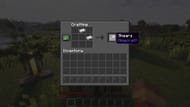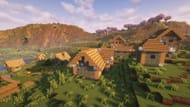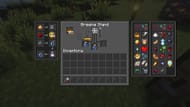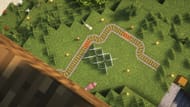Cobwebs are an interesting Minecraft item. On the surface, they seem purely detrimental, often causing players to get stuck, unable to escape from approaching hostile mobs. But in reality, these are quite complex items. They have utility uses in farms, redstone builds, and more. This means knowing these major uses and how to obtain cobwebs is quite important to survival.
Everything you need to know about cobwebs, from their many different niche in-game uses to how to collect them, can be found detailed below.
Uses of Minecraft cobwebs

Chart New Territories with the ultimate Minecraft Seed Generator!
The most obvious use for cobwebs is slowing down mobs. Any Minecraft mob other than spiders and cave spiders will be slowed while attempting to move through cobwebs. Speed is reduced to 25%, and jumping is nearly impossible.
Cobwebs can also be slow-falling mobs. In fact, it takes 13 seconds for a webbed-up mob to fall a single block. This effect isn't just for immersion, though, as cobwebs will negate any potential fall damage that a mob would otherwise take.
1.21 also introduced a new potion type that can be brewed using cobwebs. Titled weaving potion, it will cause affected mobs to explode into cobwebs when killed. This new potion also allows entities to move at 50% speed in cobwebs, rather than 25%.
The final and most complex use of cobweb is as a Minecraft redstone component. Falling blocks and entities will be slowed by them, allowing for finer control of items falling into water channels, hoppers, and onto pressure plates.
How to get cobwebs
1) Craft shears

To collect cobwebs, you must track down a few pieces of iron to craft shears. Thankfully, this Minecraft ore is quite common, and iron ingots can also be obtained quickly by looting shipwrecks or killing iron golems.
2) Find cobwebs

After making some shears, you'll need to actually track down some cobwebs. These blocks generate naturally within mineshafts, Minecraft strongholds, basement igloos, zombie villages, woodland mansion spider rooms, and around some trial chamber spawners. This means that they're quite common and should be easy to track down.
3) Collect cobwebs

The next step is to break the cobwebs using the shears you crafted earlier. This will cause them to drop as cobwebs rather than strings. You could also use a sword with the silk touch Minecraft enchantment, but there's no way to get one of these in vanilla survival.
4) Brew a weaving potion

As previously mentioned, weaving potions will cause mobs to explode into cobwebs. This means you can get an infinite amount of cobwebs using Minecraft potions. You'll need to start by using a cobweb to brew a few weaving potions, and then apply gunpowder to them to make splash potions.
You can then apply weaving to huge groups of mobs, making it very easy to generate large amounts of extra cobwebs. Cobwebs being made farmable was what made this new Minecraft 1.21 potion such an incredible addition.
The history of cobwebs

Cobwebs were much different when they were first added in Beta 1.5. For example, cobwebs originally suffocated mobs that were within them, but this was thankfully changed in Beta 1.7. However, it wasn't until the full release update 1.2.1, nearly a year later, that cobwebs would be given the ability to negate fall damage.
Uncover new worlds with our Minecraft Seed Generator!

